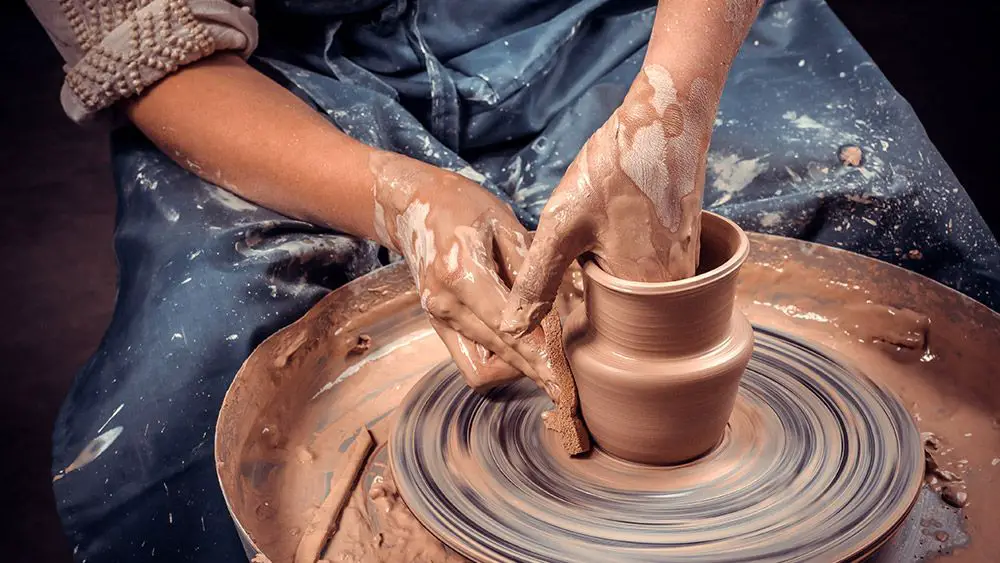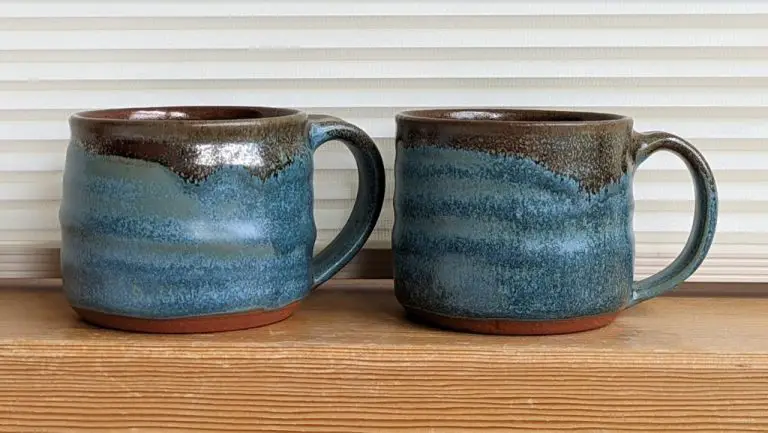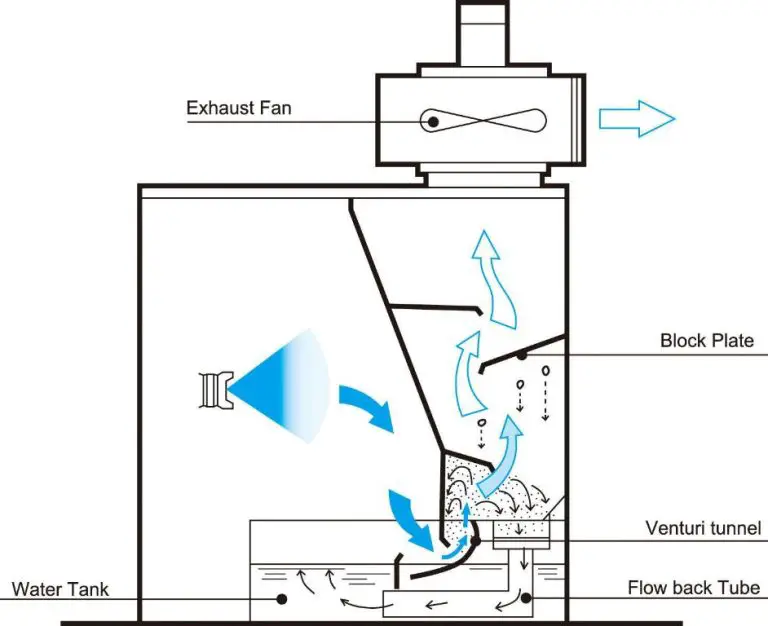Can Potters Make Money?
Making money as a potter may seem like a dream for those with a passion for working with clay. The global ceramics market is worth over $239 billion and growing, indicating there is strong demand for beautifully crafted pottery and ceramic art (Grand View Research). With dedication and business savvy, potters today absolutely can turn their passion into a profitable career. This article will explore the costs, potential income streams, keys to building your brand, and realities of making money as a professional potter. If you feel the calling to work with clay, read on to learn how to make that artistic passion pay off.
Passion vs Profit
Many potters start creating pottery purely for the love of the craft. Working with clay and creating beautiful, functional pieces can be incredibly fulfilling. As inspirational quotes about pottery demonstrate, sculpting pots and dishes from clay is often driven by passion and creativity rather than a desire for profit.
Pottery can be a meditative, relaxing hobby that helps relieve stress. The feel of the clay and the soothing, repetitive motions of throwing pots on the wheel appeals to those seeking an artistic outlet. As one quote says, “Clay is a magical substance – it brings out the inner child in me!”
For pottery purists, selling their work or trying to earn substantial money from their craft can seem crass. Many hobbyist potters are happy just to cover costs so they can keep creating. Pottery for them is about the joy of making, not profit margins and business plans.
Of course, that very same passion is what often leads potters to start considering selling their work. After all, few hobbies remain static – as skills improve, potters may dream bigger. And transforming a passion into profit has an appeal all its own.
Costs of Being a Potter

The startup costs for pottery can range quite a bit depending on the scale of your studio and aspirations as an artist. For a hobbyist just getting started, basic equipment like a pottery wheel, kiln, clay, tools, and workspace can cost between $500-$2,000. Going pro and setting up a fully-equipped studio space will likely cost $15,000-$30,000 or more.
The biggest expenses for potters typically include:
- Kiln – An electric kiln suitable for firing ceramics costs $1,000-$5,000 or more. Gas kilns tend to be more expensive.
- Pottery wheel – Wheels range from $300 for a tabletop model to $600-$2,000 for a sturdy wheel with good torque.
- Clay – Pottery clay costs $20-$30 per 25 lb bag. A studio will go through a lot of clay.
- Tools – Basic tools like trimming tools, ribs, cutters, etc. can cost $150-$300 to get started.
- Studio rental – Renting studio space ranges from $200-$1,000/month depending on location and size.
- Glazes and materials – Glazes, slips, stains, etc. cost around $20-$30 per pint.
As you can see, the costs add up quickly. But with the right business plan and marketing, many potters successfully turn their passion into a profitable small business or career.
Pricing Your Pottery
Setting prices for your pottery pieces can be a challenge, especially when you’re just starting out. There are several factors to consider when pricing your wares:
Size – Larger pieces often command higher prices, as they require more clay, time, and effort to create. Adding $5-10 per inch in height is a common guideline for pricing (source).
Techniques – Pieces utilizing advanced techniques like carving, sculpting, or multi-glaze applications can be priced at a premium over basic shapes and single glazes. Consider adding $5-10 for each unique technique used (source).
Uniqueness – One-of-a-kind designs and pieces with your distinctive artistic style can fetch higher prices than generic wares. Limited editions and exclusive works justify a price bump.
Time Investment – Account for the total time spent designing, sculpting, drying, firing, and finishing each piece.Aim to price your hourly time at a fair but profitable rate.
Materials – Factor in the cost of quality clay, glazes, tools, kiln firings and other materials. Pricing should cover these costs plus additional profit margin.
Market Comparison – Research prices of similar pottery in your local area and online. Use this to gauge what people expect to pay for handmade pottery (source).
By considering these key factors, potters can develop a fair, consistent pricing structure for their work.
Building Your Brand
Building a strong brand is crucial for potters to establish a loyal customer base and stand out in a competitive market. According to the Small Business Chronical, “branding gives your business an identity that helps you connect with buyers” (Source). Your branding encompasses your business name, logo, messaging, packaging, and overall visual identity. It tells potential customers who you are, what you stand for, and why they should purchase your pottery over competitors.
Some tips for building your pottery brand include: choosing a memorable business name and logo that reflects your style, telling your unique story and passion for pottery through branding and marketing content, ensuring your branding is cohesive across your website, social media, packaging, etc., focusing on quality and consistency so customers know what to expect from you, and defining your target audience so you can tailor branding and messaging to resonate with them.
Investing in professional marketing assets like business cards, product tags, and custom packaging also elevates your brand. According to marketing ideas from Starter Story, “professional assets like business cards, branded shipping materials, and product hang tags help legitimize your business” (Source). With a compelling brand identity, you make memorable first impressions and give customers confidence in the originality and quality of your pottery.
Selling Your Work
There are several effective ways to sell your pottery and start bringing in an income from your craft. Online shops like Etsy and your own website store provide the opportunity to sell to a global customer base. Local options like art fairs, craft shows, and galleries allow you to directly interact with customers.
Etsy is the largest online handmade marketplace, making it a top choice for potters looking to open up an online shop. With millions of active buyers, Etsy offers high visibility and built-in traffic. You can customize your shop, list unlimited products, and take advantage of their marketing and selling tools. Listing fees and commissions do apply. Other similar marketplaces include ArtFire, Bonanza, and Artfire.
Your own website store allows you to brand your pottery business, control your platform, and avoid paying commissions. However, you’ll need to drive your own traffic through marketing and SEO optimization. Shopify and Wix offer user-friendly website builders and ecommerce functionality. You can also list your products on your social media profiles.
Local craft fairs provide an in-person sales opportunity to showcase your latest creations and meet potential customers. They often take place on weekends and charge an exhibitor fee. Galleries, gift shops, cafes, and other brick-and-mortar retail outlets are additional places that may carry your pottery on consignment.
Going Full-Time
Making the transition to becoming a full-time potter is a significant step that requires careful planning and consideration. Many potters recommend having at least six months worth of living expenses saved up before taking the leap. This will provide a financial cushion as you build up your business and customer base. It’s also a good idea to start ramping up production and marketing efforts while still employed to test the waters before fully committing. Some key signs you may be ready to go full-time include consistently selling out of inventory, receiving custom orders, and having interest from retail outlets to carry your work (Source).
When making the transition, start by letting your regular customers and contacts know you are going full-time. Update your website, marketing materials, and social media to broadcast the news. Attend craft fairs and seek new retail partners to expand your reach. Going full-time allows you to increase studio hours, but be careful not to overwork yourself initially. Try setting up regular hours and sticking to them. Make sure to enjoy the new creative freedom while also developing healthy, sustainable habits.
Earning Potential
Income can vary widely for potters, depending on factors like experience, reputation, location, and whether it’s a full-time job or side gig. According to salary data, the average hourly wage for potters in the US is around $16-18 per hour. This translates to an annual salary of around $33,000-37,000 for full-time work. However, wages can range from around $13 per hour for entry-level positions, up to $24 per hour for highly skilled potters with established businesses. The top 10% of potters earn over $20 per hour.
With experience and business growth, talented potters can earn well above average. According to ZipRecruiter data, some potters make up to $24 per hour, which would equal nearly $50,000 per year if full-time. Education also impacts earning potential. Potters with a bachelor’s degree earn a median income of around $50,000, while those with an associate degree median around $48,500 annually.
While many potters start out working part-time or supplementing other income with their craft, there is good potential to earn a healthy full-time income for those able to build a strong brand and customer base for their work.
Keys to Success
There are a few key factors that can help potters achieve success in turning their passion into a profitable career:
Persistence is crucial. Making pottery takes considerable time and practice to master. Aspiring potters need determination to keep improving their skills and not get discouraged when pieces don’t turn out as planned. Staying motivated through the ups and downs is essential.
Business savvy gives potters an edge. Understanding pricing, branding, marketing, bookkeeping, and selling enables potters to actually make money from their work. Taking business classes or getting mentorship can provide the knowledge needed to run pottery as a successful venture.
Creativity and innovation are assets. Producing unique, eye-catching pottery that people want to buy requires artistic talent and imagination. Coming up with novel glazes, designs, or functionality keeps potters’ work fresh and compelling.
According to professional potters, persistence, business skills, and creativity are vital to achieving profitability and fulfillment as a full-time potter (Source).
Conclusion
Any potter who is passionate about their craft has the potential to turn their hobby into a profitable business. While it does take dedication, skill, and some startup costs, pottery can absolutely be a money-making endeavor for those willing to put in the work. The keys to success are valuing your time and talents, effectively marketing yourself, finding your niche, and expanding your reach. With persistence and smart strategies, potters can tap into the demand for quality, handmade ceramics and earn a good living doing what they love. While there are always challenges when starting a small business, pottery is absolutely a viable path for generating income by creating beautiful and functional works of art.




